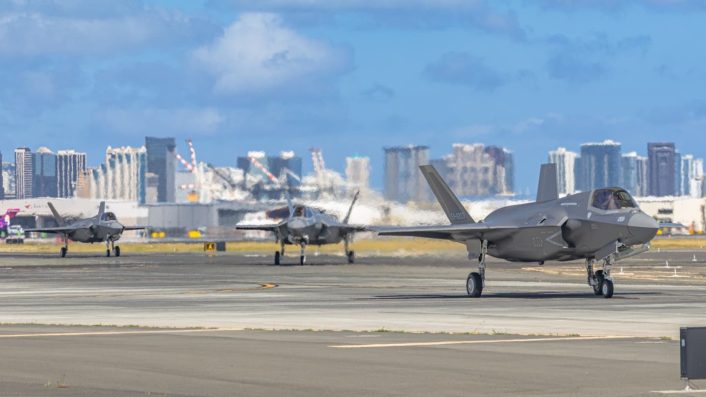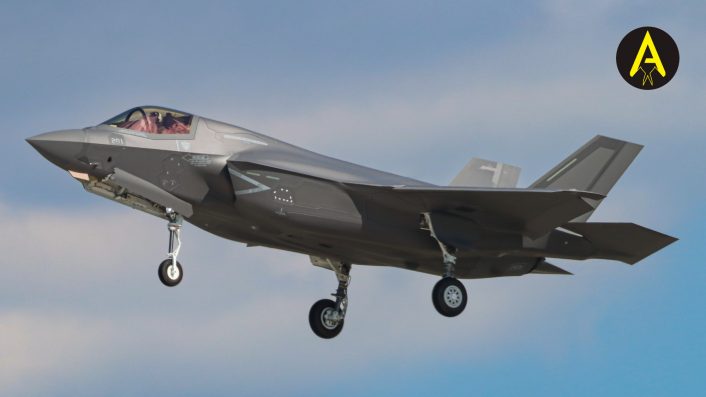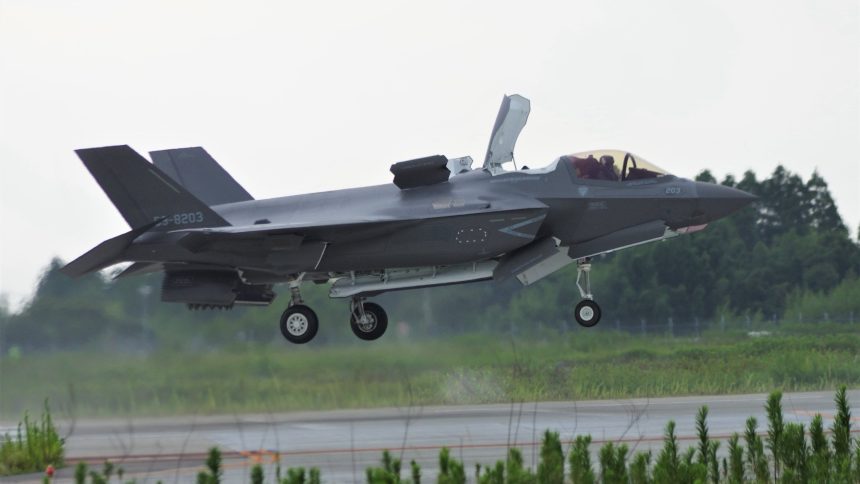The first three F-35B Lightning IIs have finally been delivered to the Japan Air Self Defense Force.
The Japan Air Self Defense Force Article (JASDF) announced the arrival of its first three F-35B Lightning II STOVL (Short Take Off Vertical Landing) jets at Nyutabaru Air Base on Aug. 7, 2025. The Japanese Ministry of Defense announced few days ago the imminent arrival of the jets, before they were spotted landing at Joint Base Pearl Harbor Hickam (JBPHH), Hawaii, on Aug. 1.
Initially, according to the MoD, four aircraft were expected to arrive. However, one of the F-35s had to stay back in the U.S. and will be ferried at a later date. The MoD further said that four more F-35Bs will be delivered to Nyutabaru by the end of March 2026.
続いて59-8204。短距離着陸! pic.twitter.com/NA12N16egy
— いたっきい@板倉秀典 (@itackey2) August 7, 2025
3機目、59−8201。通常着陸!
たぶん今日はこれで終わり。 pic.twitter.com/pwWPyeVMd3
— いたっきい@板倉秀典 (@itackey2) August 7, 2025
Japan previously announced in January 2025 that the arrival of the first F-35Bs, which was planned to happen sometime during FY (Fiscal Year) 2024 (which ends on Mar. 31, 2025), has been postponed to sometime during FY2025. A total of eight aircraft is planned for delivery during FY2025, which ends in March 2026.
U.S. pilots will conduct demonstration flights at Nyutabaru in September 2025 in an attempt to mitigate concerns of local residents over noise caused by vertical landings. An airbase is being built specifically for the F-35B’s vertical landings on the uninhabited island of Mageshima, 160 kilometers (100 miles) south of Nyutabaru, but it is expected to be ready by 2030.

Noise from vertical landings has been a major concern for local residents, with the MoD conducting a review and engaging with locals to inform the public. Only after the results of the review will be provided to the public the JASDF will start F-35B training at the location.
“Through the flight demonstration, we will give local residents the opportunity to experience the noise characteristics of the F-35B first hand, and then the MOD will explain the results of its review to the local community,” said the MoD.
Although assigned to the JASDF, the F-35Bs will operate on the Japan Maritime Self Defense Force’s (JMSDF) JS Izumo and JS Kaga. The two aircraft carriers, which are locally designated as DDHs (Helicopter-carrying Destroyers), are currently undergoing conversion to allow F-35B operations.
The JASDF also operates about 40 F-35A CTOL (Conventional Take Off and Landing) jets, with a total planned fleet of 105 aircraft. Adding the 42 F-35Bs, Japan will operate a total of 147 5th generation jets, making the country the largest F-35 operator outside the United States.

Japan’s F-35B acquisition
While initially it only acquired F-35As, Japan decided in 2018 to procure 42 F-35Bs in order to strengthen its capabilities and operate from its two aircraft carriers, small airstrips and remote islands. These 42 aircraft are part of the larger total of 147 F-35s that Japan plans to operate.
The plan was formally approved in Japan’s 2019–2023 Mid-Term Defense Program, which mentioned that 18 of the then-planned 47 F-35s would have been STOVL (Short Take-Off Vertical Landing) variants. The program of record for the F-35B was later increased to 42 aircraft.
The procurement was approved by the United States in 2020, and included both 63 F-35As and the 42 F-35Bs, for a total of 105 aircraft. According to the Defense Security Cooperation Agency’s notification to Congress, the sale was reported worth about $23.11 billion.
With 147 aircraft in service, Japan would become the second-largest operator of the F-35 after the United States. Japan also hosts in Nagoya one of three final assembly and check-out (FACO) facilities for the F-35 Lightning II program.
However, Japan’s F-35Bs will be produced in the U.S. at Lockheed Martin’s production facility in Fort Worth, Texas. The FACO facility continues to perform the final assembly and check-out of F-35A aircraft to be delivered to the JASDF, as well as Maintenance, Repair, Overhaul and Upgrade (MRO&U) activities for the North Asia region.

The F-35B in Japanese service
Plans are in place to operate the STOVL fighter jets from the JMSDF’s two Izumo-class DDHs (Helicopter-carrying Destroyers), the JS Izumo and JS Kaga, which are currently undergoing conversion to allow F-35B operations. To better prepare for the arrival of the new aircraft, Japan is studying F-35s operations from other navies who already operate the type, such as the Italian Navy and Royal Navy.
The F-35B has undergone tests with Japanese vessels twice, with the Izumo conducting flight ops in 2021, while the Kaga just recently had a F-35B land on its deck. Both of these tests were conducted with non-Japanese jets and pilots. The Izumo is set to start F-35B operations in 2027, while the Kaga will induct it into service a year later in 2028.
Interestingly, although the aircraft are planned to operate from these JMSDF vessels, the F-35B itself will be operated by the JASDF. The service plans to operate up to 105 F-35A CTOL (Conventional Take Off and Landing) and 42 F-35B V/STOVL fighter jets alongside their previous inventory of F-15J/DJs and F-2A/Bs.
Japan plans to station the first batch of F-35Bs at Nyutabaru Air Base, which is located in the southern part of the island of Kyushu, due to the its close proximity to the home port of the JS Kaga in JMSDF (Japan Maritime Self Defense Force) Kure, in Hiroshima prefecture. A temporary squadron has been established in preparation for the induction of the F-35B at Nyutabaru.









